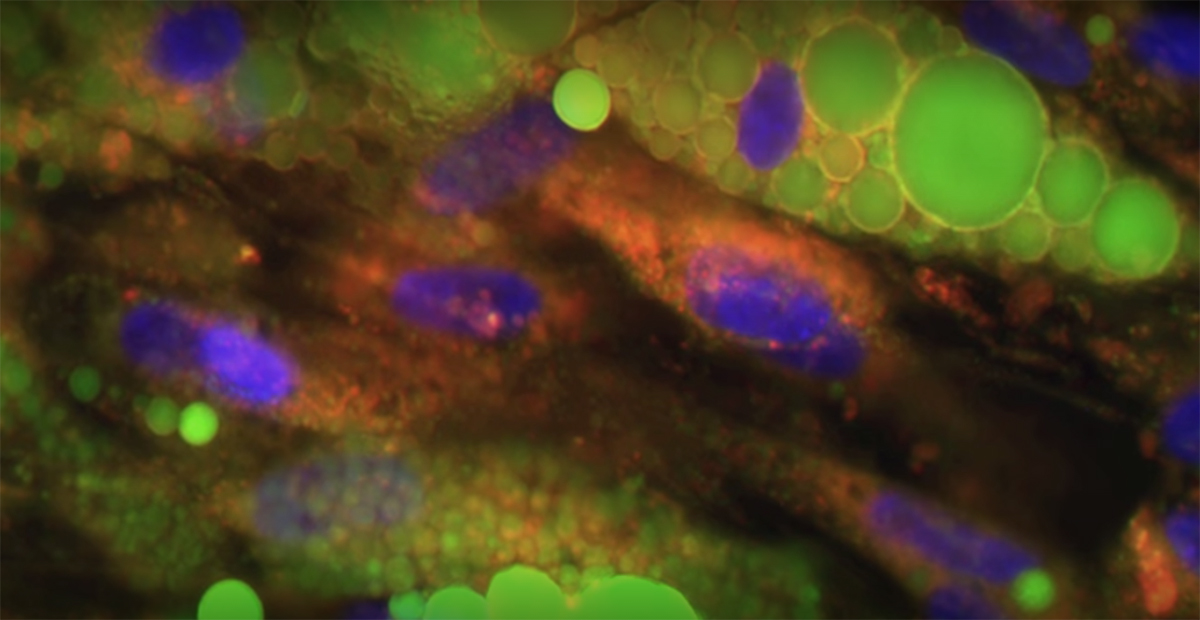UMMS Research Says the Body May Be Able to Produce More Calorie-Burning Fat

Brown fat cells image via UMMS video, below
The concept of brown fat is incredibly alluring: a type of fat naturally found in the body that actually burns calories when activated by the cold. Great, right? Right—except that questions still remain about exactly what brown fat is, and how it works.
New research from UMass Medical School (UMMS), however, may shed some light on the intriguing substance. In a study published in the journal Nature, UMMS found that existing body fat probably has the capacity to produce brown fat, which could have huge implications for metabolism and weight loss.
Knowing that fat is closely linked with blood vessels, the researchers constructed artificial blood vessels from human fat tissue. As the vessels’ branches grew, they observed that both white fat, the kind responsible for your love handles, and brown fat cells grew with them, suggesting that the body may be able to produce more calorie-burning brown fat. When the brown cells were implanted in mice, the animals’ metabolisms sped up.
“This means that probably every piece of our fat has the ability to make these beige cells,” said paper author Silvia Corvera in a statement. “It means that we could, in theory, trigger these thermogenic cells to form in different parts of the body and that would presumably help with weight loss, which could improve metabolism, diabetes or cardiovascular conditions.”
Until fairly recently, researchers believed that brown fat disappeared after childhood, when it was no longer needed to keep the body warm. Though it’s now widespread knowledge that at least some brown fat is present in human adults, the idea that the body could produce more good fat cells is still relatively new, and exciting, science.
Corvera emphasizes that there are still unanswered questions about brown fat—”People who become overweight tend to have less of these cells. Are they overweight because they don’t have these cells, or the other way around?”—but says the study could point the way toward future weight loss solutions.
“These cells, because they’re wired to do the opposite [of storing energy], could be very important in helping us maintain the proper weight,” Corvera says. “Now that we’ve found a way to grow these cells…we have an opportunity to do many of the things we want to do.”
The jury may be out on the specifics, but it can’t hurt to give this brown fat-focused workout a try. Shiver on.


